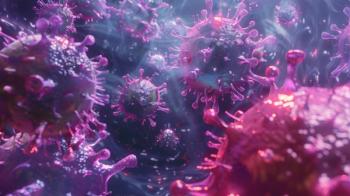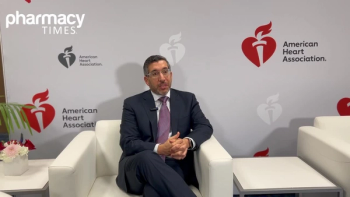About the Authors
Leen Alyaseen is a class of 2024 PharmD candidate in the Department of Pharmacy Practice, Irma Lerma Rangel School of Pharmacy, Texas A&M University in Kingsville.
Braxton Park, Janet John, Janice Thomas, Jessenia Amaro, and Mollie Schatz are class of 2027 PharmD candidates in the Department of Pharmacy Practice, Irma Lerma Rangel School of Pharmacy, Texas A&M University in Kingsville.
Sara Rogers, PharmD, BCPS, is a clinical assistant professor of precision medicine and ambulatory care at Irma Lerma Rangel College of Pharmacy, Texas A&M University in Kingsville; a clinical specialist at Texas A&M Physicians Clinic; and a cofounder of the American Society of Pharmacovigilance in Houston.
The development of stem cell transplantation (SCT), also referred to as hematopoietic SCT, is a critical landmark in medicine. SCT gives patients another chance at life when fighting such blood cancers as leukemia, lymphoma, and multiple myeloma (MM).1 This technique is carried out by stem cell infiltration into the patient’s circulation, and is intended to replace cancerous or damaged cells to facilitate average blood cell production and enhance immunity.
Cancer therapies like chemotherapy and radiotherapy are effective for treating many types of cancer, offering significant potential for disease management and overall survival improvement. SCT provides an alternate solution for patients who do not respond to traditional methods of treatment or who have a relapse after such therapies.1 Using stem cells along with the infusion of healthy (or “normal”) undifferentiated stem cells ensures the elimination of cancerous cells and regeneration of bone marrow simultaneously1,2; this results in increased protection for the patient from typical illnesses and boosts their immune response to disease.
Recently, SCT in oncology has become more effective, less toxic, and more accessible. The innovation of haploidentical transplantation using donors with partial matching has enlarged the pool of donors, relieving the stress of finding a match and hastening transplants.2 Also, the strict protocols and supportive care regimens have drastically minimized complications associated with the procedure, making the technique tolerable and efficient.
At the heart of technology innovation, SCT evolves based on the research and technological developments that are key to the field’s advancement and the possibility of application in cancer clinics.1,2 Further, SCT is becoming more personalized with immunotherapy and genome-editing therapies.
Clinical Application
SCT is recommended for patients who are in remission and can tolerate intensive chemotherapy; SCT is done during the consolidation phase. During this process, the remaining leukemic cells, including normal cells, are killed from the patient’s bone marrow, and are replaced with the transfused stem cells the transfusion of stem cells. The new stem cells replenish the healthy stem cells in the bone marrow, promoting the production of new red blood cells, white blood cells, and platelets.3,4 Allogeneic transplants, the most common among patients with leukemia, utilize healthy blood-forming cells from a family member who is human leukocyte antigen (HLA)–matched, umbilical cord blood, or an unrelated donor. Previous exposure to leukemic cells will assist the newly transplanted immune system in recognizing and assailing any remaining cancerous cells, known as the graft-vs-leukemia effect.4
Lymphoma is a type of cancer that begins in the lymphatic system; the malignant lymphomas include Hodgkin lymphoma (HL) and non-HL.5 Chemotherapy is usually the first-line therapy for aggressive lymphomas, but 20% to 30% of patients with non-HL and 15% of patients with HL relapse after the first therapy.6 Follicular lymphoma, the most common indolent non-HL, is usually considered incurable and exhibits a high incidence of relapse.7
SCT is considered for those failing first-line therapy.7 Two approaches to treating recurrent follicular lymphomas include autologous SCT (ASCT) and allogeneic SCT (alloSCT).7 A study (NCT00137995) conducted before the widespread use of rituximab (Rituxan; Genentech) compared chemotherapy with chemotherapy followed by ASCT.7 The study demonstrated higher 2-year progression-free survival (PFS) rates for purged (hematopoietic stem cells [HSCs] without contaminated cancer cells) and unpurged (unpurified HSCs) stem cells (58% and 55%, respectively) compared with chemotherapy alone (26%).7 Additionally, overall survival at 4 years was notably higher in the purged and unpurged stem cells (71% and 77%, respectively) than chemotherapy alone.7
alloSCT has a lower rate of relapse but a higher rate of transplant-related mortality, especially in older patients.7 To minimize this, a reduced intensity conditioned (RIC) alloSCT, was considered. Studies using the RIC allogeneic SCT process have been promising in older patients and in those heavily pretreated (with chemotherapy or ASCT), showing a possibility for a cure. This treatment shows a 5-year PFS rate of 50% to 85%.7
MM is a type of cancer that forms in plasma cells. In MM, the cells accumulate in the bone marrow and become cancerous, crowding out the healthy blood cells.8 There are several treatment options for MM, including chemotherapy, immune modulator drugs, targeted therapies, stem cell transplant, and supportive care.8 The deciding factors for what form of treatment to pursue include the disease stage, the patient’s health, and the genetic characteristics of the cancer cells.8
SCT, and specifically usually ASCT, is commonly considered the standard consolidation plan for patients with newly diagnosed MM and some patients with a recurrence of the disease.9 ASCT is added to treat patients undergoing high-dose chemotherapy (HDC) combined with ixazomib (Ninlaro; Takeda Pharmaceuticals), an oral proteasome inhibitor, and granulocyte colony-stimulating factors.9 This combination of treatments is favorable with stem cell mobilization in approximately 89% of patients.9 The best patient candidates with MM for stem cell transplantation are in overall good health and can withstand HDC, respond well to initial treatment, have adequate stem cell reserves, are relatively young, and have stable comorbidities.8
Challenges Behind SCT
There is a need to address challenges with host immune rejection and procedure-related issues before stem cell treatments are offered to patients as the first line of therapy. The expression of foreign antigens on the stem cell leads to the rejection of the graft by the host’s immune system.10 This is not an issue in ASCT, as the donor cells are the same as the recipient stem cells. Allogeneic embryonic stem cells (ESCs) transplanted in mice with healthy immune systems vs those that are immunocompromised showed destruction within 7 to 10 days, with a lower cell survival time in the second round of injections.10 The presence of surface proteins on the ESCs triggers the attack of donor ESCs by the recipient’s immune system.10 Antibodies in the body cause hyperacute immune rejections involving systemic inflammatory responses shortly after transplantation.10 HLA mismatch leads to acute rejection within 7 days of the procedure, whereas chronic rejection means a mismatch in the minor histocompatibility complex results in long-term graft rejection and graft-vs-host diseases.10
Chimeric antigen receptor (CAR) T-cell therapy has provided positive results for B-cell malignancies such as lymphoma, with patients experiencing sustained remissions.11 However, there are safety concerns about how the activation and proliferation of CAR T cells are uncontrolled once infused into the patient’s body.11 In some clinical trials, the 10-fold expansion of CAR T cells has caused tumor lysis syndrome and fatal cytokine release syndrome.11 In addition, 10% of patients given CAR T-cell therapy targeting the pan–B-cell antigen CD19 (CART-19) show evidence of relapse due to the inability of CAR T cells to target and bind to mutant cancer cells that have lost their antigens.11 To combat this, the recombinant engineering of switches specific to CART-19 has been a potential method to prevent the undesired release of cytokines.11 These antibody switches contain a tumor antigen–specific Fab molecule embedded with a new peptide that can bind to an antibody and generate an antigenic response.11 The Fab molecule binds specifically to the switchable CAR T cell and forms a complex that can control the activities of the CAR T cells to a certain extent.11
Unlike the success story of B-cell stem cell therapy, the use of CAR T-cell therapy for T-cell malignancies has major challenges relating to its procedure.12 As cancer has a set pathway for infection of the T cell, the possibility of blast contamination of the newly replaced autologous T-cell products is high.12 The contaminated CAR T cells would then be targeted for destruction, meaning that T-lineage antigens are no longer being eliminated.12 Because of the antitumor activity of allogeneic double-negative T cells (DNTs), it has been explored as the alternative treatment option against T-cell acute lymphoblastic leukemia and peripheral T-cell lymphoma.12 In vitro studies and xenograft models showed that allogeneic DNTs could be made more potent in the destruction of T-cell malignancies by transducing the DNTs with a third-generation anti–CD4-CAR-DNT.12
Recent Research Innovation
Stem cell therapy is a treatment of interest for cancer due to its reduced off-target effects and potential for enhancing the target specificity of traditional standards of care when used as carriers or in combination therapy. These treatment strategies involve HSC and mesenchymal stem cell (MSC) transplantation.
Specifically for blood cancers such as MM, leukemia, and lymphoma, the derivation of exosomes from stem cells has shown promise in providing a modified route for delivering anticancer drugs. To utilize the stem cells as carriers, they must be primed with the drug of choice and other exogenous materials to increase the acceptance of the stem cells into the body.13 After priming, the stem cells can absorb the drug and package the drug molecules into their exosomes to be released via exocytosis at the tumor site.13 Bonomi et al experimented with priming mesenchymal stromal cells with paclitaxel to test for growth inhibition in MM and leukemia cells in both in vitro and in vivo studies.14,15 When tested in vitro and in vivo on both human and mice leukemia cells, the study found that the paclitaxel-primed cells inhibited proliferation and reduced angiogenesis of leukemia cells.15 The anticancer drug–primed stem cells acted relatively specifically on the tumor cells and targeted the release of paclitaxel to bind to leukemia cells and instigate necrosis.15 Similar potent anticancer effects were seen when applied to MM cells, an aggressive form of hematologic cancer. Additionally, observations showed proof of MM cell growth suppression upon injection of the primed MSCs.14 Although further studies are needed to ensure the safety and efficacy of drug-releasing stem cell exosomes, this treatment option, combined with other immunotherapies, can enhance antiangiogenic effects at target cells while maintaining the integrity of healthy cells.
Another innovation in stem cell therapy for treating blood cancers is combining it with CAR T-cell treatments to create a replenishing source of immune cells. CAR T cells have been successful in anticancer applications; the cells are extracted from the patient, activated, and otherwise modified before being transfused into the patient to act on the tumor cells by targeting their antigens.13 However, the actions of the CAR T cells have a short duration due to their tendency to differentiate into effector cells with limited anticancer activity.13 By combining the CAR T cells with stem cells, there would be longer-lasting sources of “blank canvas” immune cells to draw from to create more CAR T cells; these, in turn, can prolong the anticancer activity at the tumor site to prevent further growth and kill the cancer cells. Wellhausen et al embraced this approach and used clustered regularly interspaced short palindromic repeats (CRISPR) technology to edit a protein called CD45, which sits on the surface of CAR T cells and HSCs to protect them from leukocyte attacks.16 With the mutation, the CAR T-cell/stem cell therapy has shown prolonged anticancer effects against acute myeloid leukemia, acute T-cell leukemia, and B-cell lymphoma.16
Conclusion
In hematologic oncology, the evolution of SCT and its accompanying treatments continue to show improvement in blood cancer therapy. In its current clinical setting, SCT therapies have offered many patients with leukemia, lymphoma, and MM a second chance at life. However, with innovation comes new challenges, such as antigen mismatching, that will require equally creative solutions. Recent innovations, like the development of paclitaxel and CAR T-cell treatments, show the ongoing efforts to refine and reduce the risks associated with SCT. These developments are just a glimpse into the fascinating future of SCT pharmaceutics, which can further expand the therapeutic benefits of stem cell therapies in medicine.
REFERENCES
Rimando JC, Christopher MJ, Rettig MP, DiPersio JF. Biology of disease relapse in myeloid disease: implication for strategies to prevent and treat disease relapse after stem-cell transplantation. J Clin Oncol. 2021;39(5):386-396. doi:10.1200/JCO.20.01587
La Rocca U. Donor specific anti-HLA antibodies in Hematopoietic Stem Cell Transplantation. A stepwise project to establish a better definition of their r ole and a desensitization strategy. Dissertation. Sapienza Universita di Roma. Accessed February 18, 2024. https://iris.uniroma1.it/ bitstream/11573/1689215/1/Tesi_dottorato_LaRocca%20.pdf
Stem cell transplant for leukemia. Siteman Cancer Center. Accessed February 24, 2024. https://siteman.wustl.edu/ treatment/cancer-types/leukemia/blood-and-marrow-transplant-for-leukemia/
Stem cell transplantation. Leukemia & Lymphoma Society. Accessed February 24, 2024. https://www.lls.org/leukemia/ acute-myeloid-leukemia/treatment/stem-cell-transplantation
Matasar MJ, Zelenetz AD. Overview of lymphoma diagnosis and management. Radiol Clin North Am. 2008;46(2):175-198. doi:10.1016/j.rcl.2008.03.005
Zahid U, Akbar F, Amaraneni A, et al. A review of autologous stem cell transplantation in lymphoma. Curr Hematol Malig Rep. 2017;12(3):217-226. doi:10.1007/s11899-017-0382-1
Norman JE, Schouten HC, Dreger P, Robinson SP. The role of stem cell transplantation in the management of relapsed follicular lymphoma in the era of targeted therapies. Bone Marrow Transplant. 2019;54(6):787-797. doi:10.1038/s41409-018-0372-5
Gerecke C, Fuhrmann S, Strifler S, Schmidt-Hieber M, Einsele H, Knop S. The diagnosis and treatment of multiple myeloma. Dtsch Arztebl Int. 2016;113(27- 28):470-476. doi:10.3238/arztebl.2016.0470
Bühler S, Akhoundova D, Jeker B, et al. Stem cell mobilization with ixazomib and G-CSF in patients with multiple myeloma. Cancers (Basel). 2023;15(2):430. doi:10.3390/cancers15020430
Li SC, Zhong JF. Twisting immune responses for allogeneic stem cell therapy. World J Stem Cells. 2009;1(1):30-35. doi:10.4252/wjsc.v1.i1.30
Rodgers DT, Mazagova M, Hampton EN, et al. Switch-mediated activation and retargeting of CAR-T cells for B-cell malignancies. Proc Natl Acad Sci U S A. 2016;113(4):E459-E468. doi:10.1073/pnas.1524155113
Fang KK, Lee J, Khatri I, Na Y, Zhang L. Targeting T-cell malignancies using allogeneic double-negative CD4-CAR-T cells. J Immunother Cancer. 2023;11(9):e007277. doi:10.1136/jitc-2023-007277
Chu DT, Nguyen TT, Tien NLB, et al. Recent progress of stem cell therapy in cancer treatment: molecular mechanisms and potential applications. Cells. 2020;9(3):563. doi:10.3390/cells9030563
Bonomi A, Steimberg N, Benetti A, et al. Paclitaxel-releasing mesenchymal stromal cells inhibit the growth of multiple myeloma cells in a dynamic 3D culture system. Hematol Oncol. 2017;35(4):693-702. doi:10.1002/hon.2306
Pessina A, Coccè V, Pascucci L, et al. Mesenchymal stromal cells primed with paclitaxel attract and kill leukemia cells, inhibit angiogenesis and improve survival of leukemia-bearing mice. Br J Haematol. 2013;160(6):766-778. doi:10.1111/bjh.12196
Wellhausen N, O’Connell RP, Lesch S, et al. Epitope base editing CD45 in hematopoietic cells enables universal blood cancer immune therapy. Sci Transl Med. 2023;15(714):eadi1145. doi:10.1126/scitranslmed.adi1145

















































































































































































































